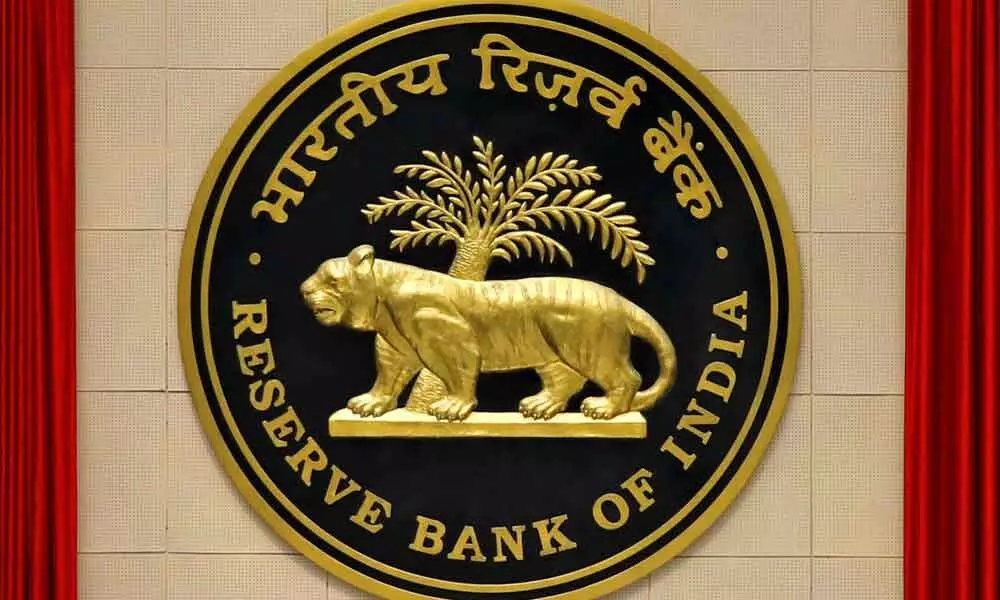SBI sees 20bps hike on reverse repo rate
Budget may result in a trade-off between liquidity normalisation and rate adjustments
image for illustrative purpose

Mumbai: Budgetary move may result in a trade-off between liquidity normalisation and rate adjustments. While the budget needs to be complemented for fiscal transparency as it is on course to align all off balance PSU borrowings (7.7 per cent of GDP) and fiscal deficit (6.4 per cent) possibly by FY24, this would clearly result in a trade-off between liquidity normalisation and rate adjustments, says an internal economic research finding of the country's largest lender, State Bank of India.
The larger question is the blurring of debt management and liquidity management operations of RBI. This again raises the question of whether debt management functions of the RBI need to be separated from monetary management, it adds.
The large size of the FY23 market borrowings at Rs 14.3 lakh crore and with no progress on the inclusion of Indian debt market in the global bond indices yet begs the question whether the RBI might have to delay the liquidity normalisation in an effort to support the large borrowings programme.
Based on the ownership pattern of Government of India dated securities as on September and given the total net borrowings of Centre at Rs 11.2 lakh crore, we believe demand of securities from banks has to be around Rs 4.2 lakh crore (considering NDTL increase of 10 per cent and 27 per cent of SLR). The insurance sector could subscribe to Rs 2.7 lakh crore. This implies RBI would have to still ensure demand of at least Rs 2.0 lakh crore through OMO purchases. This leaves the question of liquidity normalisation complicated.
It is an irony that outstanding dated government securities (as on January-end), aggregating Rs 80.8 trillion and due for redemption till 2061, have a handful of formidable players like Banks and Insurance companies who together account for 62 per cent ownership among themselves/Rs 50 trillion though overall share of Banks has dwindled by 10 per cent in the last decade (from 47.25 per cent in March, 2010).
Given that banks and insurance companies largely carry the burden of managing the market of G-secs, the next question is of redemption patterns. In the current fiscal (YTD), out of total G-Sec issuance of Rs 8.27 trillion, bonds due for repayment in 0-5 and 5-10 years bucket constituted 28.4 per cent and 24 per cent of total value respectively, implying 48 per cent of amount raised were through papers having maturities in excess of 10 years. Banks prefer papers of 10 years and below and insurance companies of larger than 15 years. RBI may have to change the composition of outstanding as well as fresh/to-be-issued papers in FY23 with medium duration offerings/10 years and below elbowing longer tenor papers to balance redemption pressures going forward. It is to be noted that satiating market's craving for liquidity annihilation of late through siding with longer period 28-days VRRR are only measures of exigencies and not permanent tools of liquidity adjustment.
The questions is whether India could take a quick decision of getting included in bond index that many puritans believe would help in bringing annual inflows somewhere close to Rs 1.5 lakh crore/US$15-20bn in our Rs 80 trillion debt paper market. As India pursues an ambitious roadmap to clock unprecedented growth on exports front in the realigning supply chain ecosystem that has forced relocation of the 'factories to the world' from certain jurisdictions, the RBI may find its arsenal equipped with insufficient gunpowder should the inflows spike. Also, the Damocles' sword of RBI in managing such rupee swings through interventions dubbed as 'precision strikes' is serrated more towards appreciation check, thereby requiring frequent interferences. This could open up a pandora's box!
Elsewhere, the real problem might have started when the credit growth started picking up in H2, but the deposits growth lagging behind. The incremental credit deposit ratio currently stands at 140 indicating sooner than later there is a need to increase the deposits rate to garner more durable liquidity in terms of bank deposits. Any delay in raising deposit rates may result in a only large incremental increase in later point of time as banks will have to do a catch up. Also, small saving rates continue to be attractive in terms of rates.
Recently, some private banks have raised their term deposits rates in the tenures like 2-3 Y, 3-5 Y and above 5 Years buckets. With the increase in deposits rates, the lending rates also need to increase to preserve the margins. However, this will be a catch-22 situation as the high lending rates will be danger to incipient recovery. This conundrum gets more complex in FY23. In FY22, Small savings collections exceeded the budgeted amount by a large Rs 2 lakh crores, and that had resulted in net borrowing falling short by Rs 1.7 lakh crore.
The challenge lies in FY23 with net borrowings increasing by Rs 4.1 lakh crore and small savings supposed to be lower by Rs 1.7 lakh crore than the revised FY22 amount. If this numbers in FY23 fructify, there will be large pressures on bank deposit rates to go up given that small saving rates are already much higher than bank deposit rates. "Given all this, we believe the time is now appropriate to go for a 20-bps hike on reverse repo rate, but outside the MPC meeting as enshrined in the RBI act that clearly lays down that reverse repo is more of a liquidity management. A hike in reverse repo is also required as a larger corridor has resulted in rate volatility," says SBI group's chief economic advisor, Dr Soumya Kanti Ghosh.

